Remember when living rooms were actually called “front rooms” or “parlors” and were treated like museums rather than places to, well, live? The 1970s perfected the art of the untouchable living room, where everything looked gorgeous but came with an invisible “DO NOT TOUCH” sign. These spaces were reserved for company, holidays, and the occasional photo opportunity, while the family huddled in the den or kitchen for actual relaxation. Let’s take a nostalgic trip through those pristine sanctuaries that our mothers guarded more fiercely than Fort Knox.
1. The Plastic-Covered Sofa
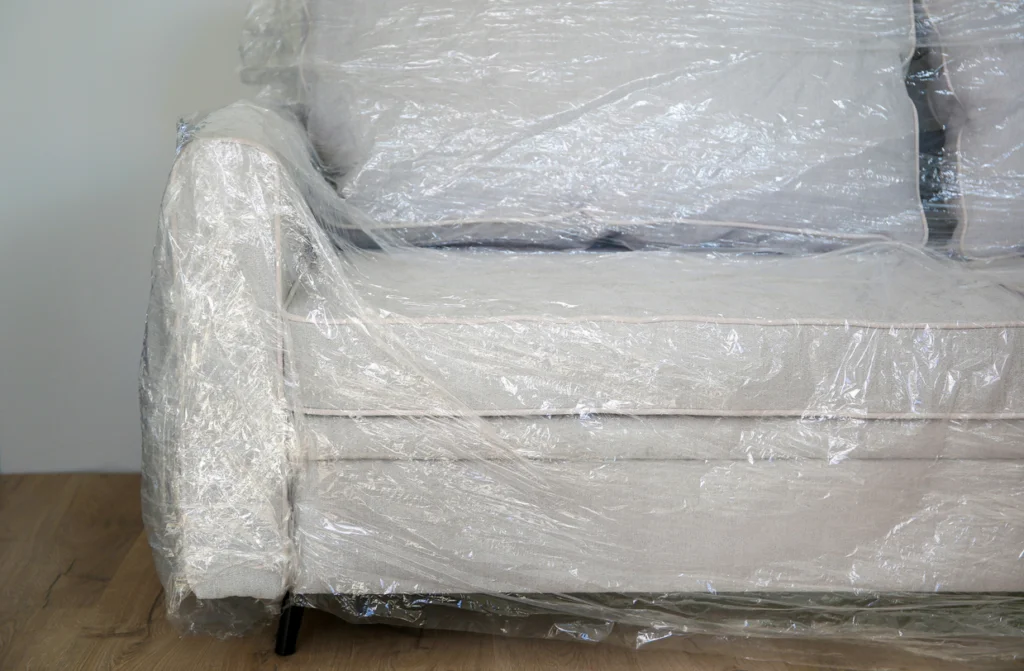
Every ’70s living room worth its shag carpet had that one perfect sofa wrapped in heavy-duty clear plastic like a piece of furniture preparing for surgery. The plastic was supposed to protect the expensive upholstery underneath, but it turned every attempt at sitting into a sweaty, squeaky ordeal that sounded like opening a bag of chips. Mom insisted the plastic would come off “someday” for special occasions, but that day mysteriously never arrived.
The cruel irony was that these sofas were often the most beautiful pieces in the house, featuring rich velvets or intricate patterns that deserved to be seen and enjoyed. Instead, they sat there like museum pieces, their beauty muffled under layers of protective plastic that reflected the overhead lighting. We learned early that comfort was secondary to preservation, and that some furniture was meant to be admired from a respectful distance rather than actually used.
2. The Glass Coffee Table Books

Coffee tables in the ’70s weren’t for coffee—they were for displaying oversized books about art, photography, or exotic destinations that no one was allowed to actually open. These hefty tomes with names like “The Great Masters” or “Wildlife of Africa” sat perfectly arranged at precise angles, their glossy covers catching the light just so. Moving one even slightly to make room for an actual coffee cup was grounds for a serious talking-to.
The books themselves were often genuinely fascinating, filled with stunning photographs and informative text that could have provided hours of entertainment. But they existed purely as status symbols, proof that the family had culture and sophistication, even if that culture remained forever sealed between pristine pages. We’d sneak peeks when Mom wasn’t looking, carefully opening to random pages before quickly closing them and returning them to their exact positions.
3. The Decorative Ceramic Fruit Bowl

No ’70s living room was complete without an ornate ceramic or crystal bowl filled with artificial fruit that looked almost real enough to bite. These pieces sat prominently on coffee tables or sideboards, their perfectly arranged apples, oranges, and grapes never rotting, never needing replacement, and never, ever to be disturbed. The fruit was often so realistic that guests would sometimes reach for a piece before being gently redirected.
The bowl itself was usually a work of art, often featuring intricate patterns or made from expensive materials that made it more valuable than some families’ cars. But its beauty was secondary to its function as a conversation piece and status symbol. The fake fruit inside was arranged with the precision of a museum display, each piece positioned to create the perfect composition that would remain unchanged for years.
4. The Untouchable Entertainment Center

The entertainment center was the crown jewel of ’70s living rooms, a massive wooden cabinet that housed the television, stereo system, and often a bar area behind sliding doors. Every component was perfectly arranged and dusted daily, but using any of it required special permission and careful supervision. The TV was only turned on for evening programs or special occasions, and touching the stereo meant risking damage to the carefully organized record collection.
These units were often custom-built or extremely expensive, designed to be the focal point of the room while hiding the “unsightly” electronics within beautiful wood cabinetry. The bar area, when present, contained the good glasses and bottles that were reserved for entertaining, never for casual family use. Even changing the channel required asking permission first, as if the television were some delicate scientific instrument rather than a piece of entertainment equipment.
5. The Macramé Wall Hangings
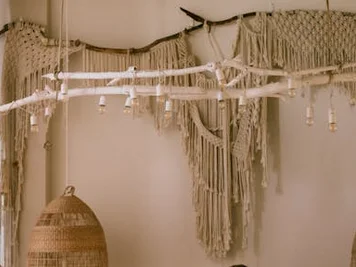
Macramé was everywhere in the ’70s, from plant hangers to elaborate wall sculptures that turned living rooms into showcases of knotted rope artistry. These intricate pieces took hours to create and were hung with the reverence usually reserved for priceless paintings. Touching them meant risking pulling a knot loose or getting the rope dirty, which would ruin the entire piece.
The larger wall hangings were often the centerpiece of an entire wall, featuring complex patterns and sometimes incorporating beads, shells, or driftwood for added visual interest. They represented the crafty spirit of the decade while also serving as proof of the homemaker’s artistic abilities. But like everything else in the formal living room, they were meant to be admired from afar, their delicate construction making them too fragile for casual contact.
6. The China Cabinet Treasures
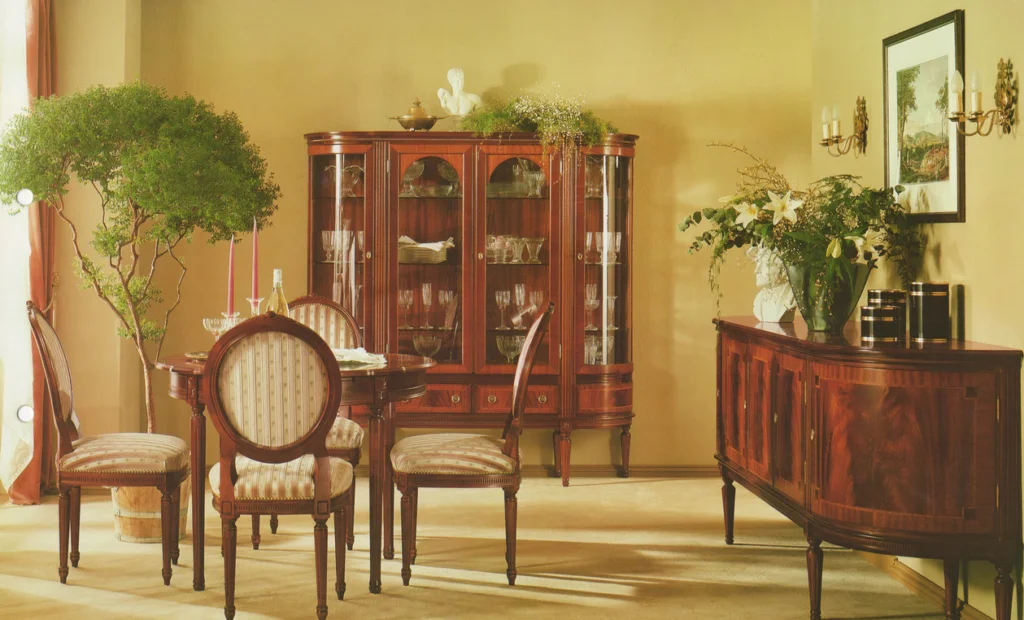
The china cabinet was like a jewelry box for dishes, displaying the family’s finest dinnerware, crystal glasses, and serving pieces that came out maybe twice a year. Each piece was carefully arranged to show off its best angle, and the cabinet doors were kept locked tighter than a bank vault. Even looking too closely at the contents was discouraged, as fingerprints on the glass were considered a minor household catastrophe.
Inside, generations of wedding gifts and heirloom pieces created a museum of family history, with each item telling a story of special occasions and careful preservation. The “good china” often included full sets for twelve people, despite the fact that the family rarely entertained more than six. These treasures existed in a state of perpetual readiness for events that might never come, their beauty preserved but never truly enjoyed.
7. The Decorative Throw Pillows
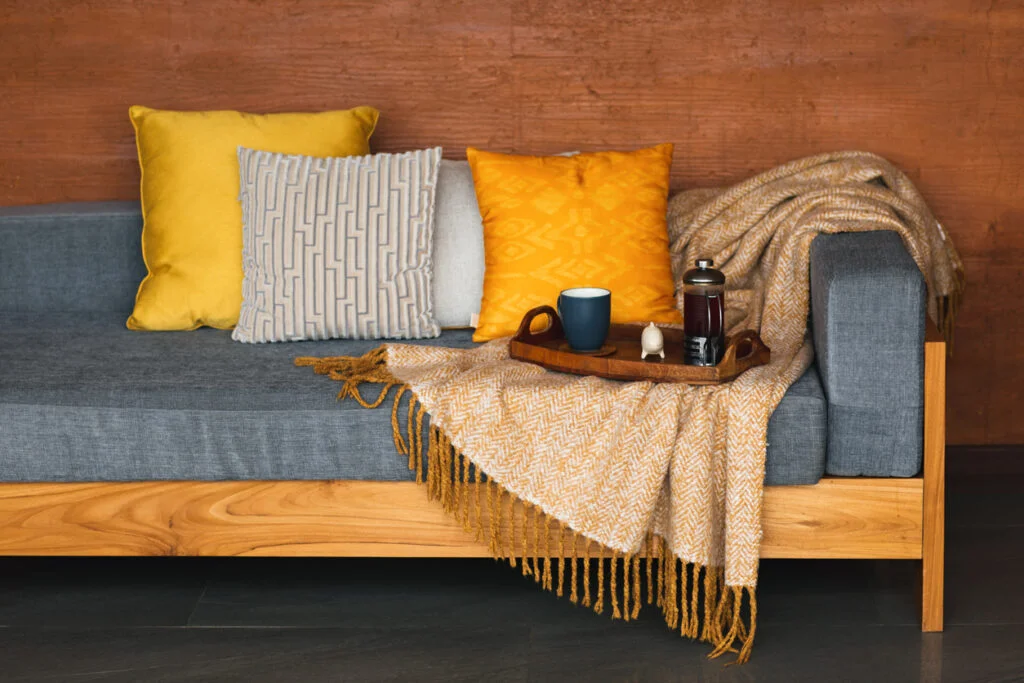
Throw pillows in the ’70s living room weren’t for throwing or even for comfort—they were architectural elements that completed the room’s design scheme. Arranged with mathematical precision on the plastic-covered sofa, these pillows featured elaborate needlework, expensive fabrics, or intricate patterns that coordinated perfectly with the drapes. Moving one meant disrupting the entire carefully planned composition.
Many of these pillows were handmade by the lady of the house or purchased at considerable expense from upscale department stores. They featured everything from detailed crewel embroidery to luxurious velvet and silk fabrics that would show every fingerprint or wrinkle. The idea of actually leaning against one was unthinkable, as comfort would inevitably lead to crushing, which would destroy the pillow’s perfect shape and pristine appearance.
8. The Artificial Flower Arrangements
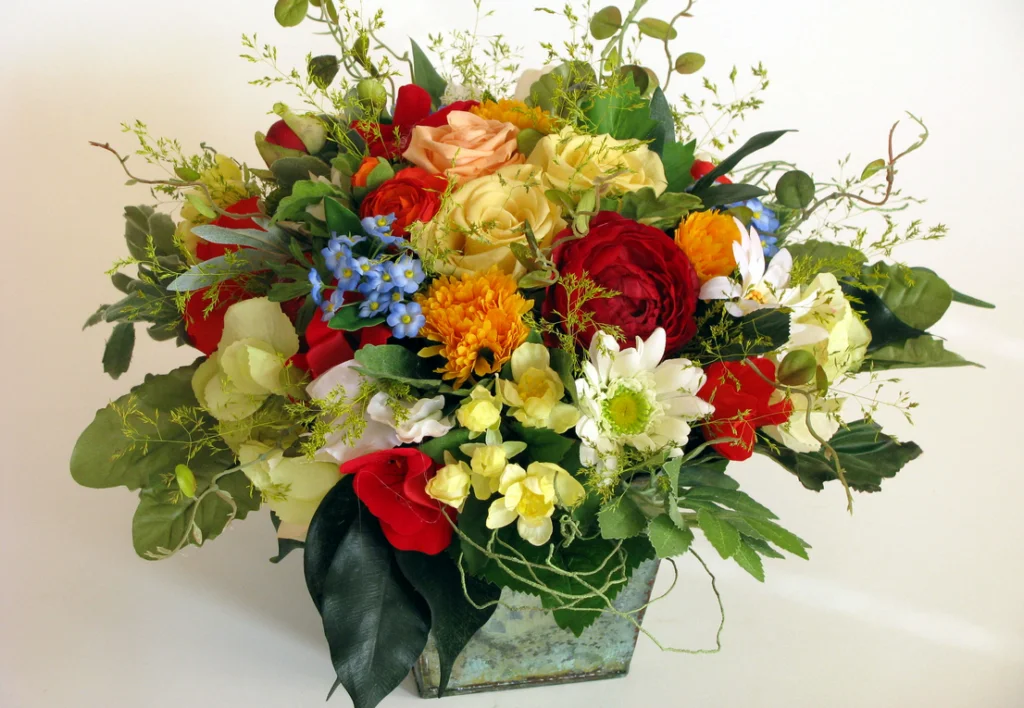
Fresh flowers were unpredictable—they wilted, dropped petals, and required constant maintenance that could disrupt a perfectly arranged living room. Artificial flowers, on the other hand, provided eternal beauty without the mess, making them the perfect solution for the untouchable ’70s living room. These elaborate arrangements often featured exotic blooms that would never survive in the local climate, adding an air of sophistication and worldliness.
The best artificial flowers were works of art in themselves, crafted from silk or other high-quality materials that closely mimicked nature while offering superior durability. They were arranged by professionals or by homemakers with serious artistic pretensions, creating compositions that looked like they belonged in a magazine spread. Touching them meant risking bent stems or displaced petals that would ruin the entire arrangement’s carefully planned perfection.
9. The Conversation Area Ashtrays

Even if no one in the family smoked, every properly appointed ’70s living room had at least two decorative ashtrays strategically placed for visiting guests. These weren’t ordinary ashtrays but works of art made from crystal, ceramic, or even precious metals, designed to complement the room’s overall aesthetic. They were cleaned and polished regularly despite never being used, maintaining their sparkle for hypothetical smoking guests.
The ashtrays themselves often reflected the homeowner’s travels or interests, featuring designs from exotic locations or created by renowned artists and craftspeople. Some were so beautiful that using them for their intended purpose seemed almost sacrilegious, which worked out perfectly since they rarely served any practical function. They existed purely as symbols of hospitality and sophistication, ready to serve guests who might never materialize.
10. The Decorative Candles

Candles in the ’70s living room were sculptures, not light sources, arranged in elaborate candelabras or displayed as individual art pieces that were never meant to be lit. These weren’t your everyday candles but expensive decorator pieces in unique shapes, colors, and sizes that had been chosen specifically to complement the room’s color scheme. Lighting one would not only provide unnecessary illumination but would also destroy the candle’s perfect form.
Many of these candles were genuine works of art, hand-carved or molded into intricate shapes that made them more like small sculptures than functional items. They accumulated dust over the years, requiring careful cleaning that couldn’t disturb their placement or damage their delicate surfaces. The idea of actually burning them was as foreign as using the good china for a regular Tuesday dinner.
11. The Untouchable Record Collection

The stereo cabinet often housed an impressive collection of albums that were displayed more for their cover art than their musical content. These weren’t the records the family actually listened to—those lived in bedrooms or the family room—but rather a curated selection chosen for their cultural significance or visual appeal. The covers were kept in pristine condition, often protected by plastic sleeves that preserved their artwork like museum pieces.
This collection typically featured classical music, jazz standards, and popular artists whose albums looked impressive when glimpsed through the cabinet’s glass doors. Actually playing these records would risk scratches, warping, or other damage that would diminish their collectible value and perfect appearance. They served as cultural credentials, proof that the family appreciated good music even if they never actually listened to it in the formal living room.
12. The Decorative Brass Accessories
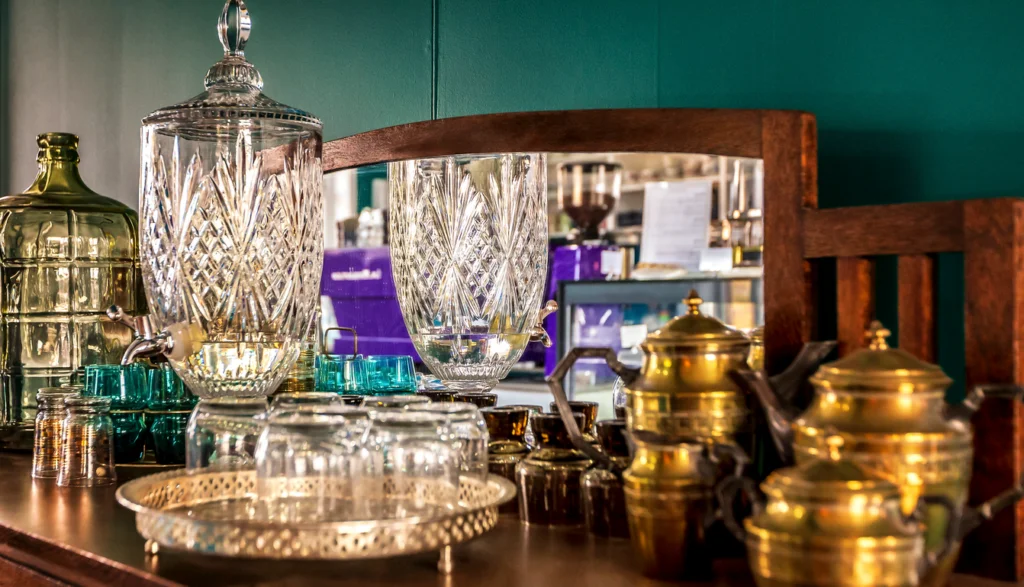
Brass was the gold of ’70s home décor, appearing in everything from picture frames to decorative bowls, candlesticks, and ornamental figurines. These pieces required constant polishing to maintain their warm, golden glow, and touching them meant leaving fingerprints that would tarnish their perfect shine. Each brass accessory was positioned with care to catch and reflect the room’s lighting, creating a warm, rich ambiance that spoke of luxury and attention to detail.
The maintenance required for these pieces was considerable, involving special polishes and careful buffing that had to be done regularly to prevent tarnishing. But the effort was considered worthwhile because brass accessories elevated the entire room’s appearance, adding sophistication and warmth that other materials couldn’t match. They were investments in the room’s overall aesthetic, too valuable and too delicate for casual handling.
13. The Shag Carpet

The pièce de résistance of any ’70s living room was the shag carpet, a luxurious expanse of deep-pile fibers that felt like walking on clouds but required maintenance that rivaled caring for a pet. This wasn’t carpet you could just vacuum—it needed special rakes to maintain the proper pile direction and texture. Walking on it in anything but stocking feet was forbidden, and dropping anything meant a careful search through the deep fibers to retrieve it.
The shag carpet was often the most expensive single item in the room, available in rich earth tones or bold colors that made it a major design statement. Its deep pile showed every footprint and required careful grooming to maintain its pristine appearance, making it more like a delicate textile artwork than a functional floor covering. The family learned to tiptoe across it when necessary, treating it with the same reverence they’d show a priceless Persian rug.
Those were the days when living rooms were shrines to good taste and proper homemaking, spaces that existed more in theory than in practice. While we might laugh now at the absurdity of furniture you couldn’t sit on and carpets you couldn’t walk on, these rooms represented something important: the aspiration to create beauty and maintain standards in an increasingly casual world. They may have been off-limits, but they gave our mothers a sense of pride and accomplishment that was worth more than any amount of comfort or convenience.
This story 13 Things in a ’70s Living Room That Were Purely Decorative—and Always Off-Limits was first published on Takes Me Back.


